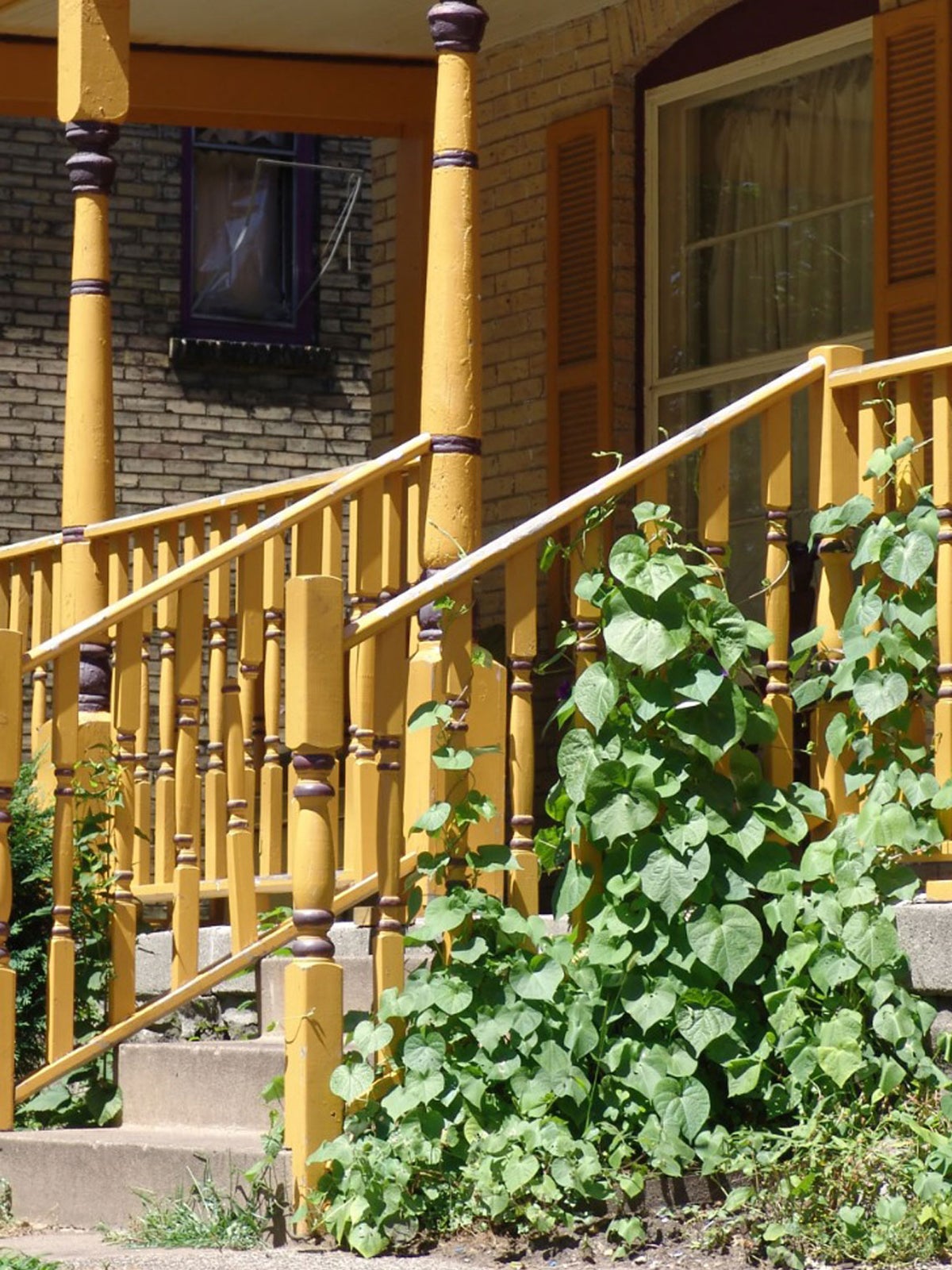Training Plants Up Porch Railings: Learn About Growing Vines On Railings


Growing vines on railings is a fun way to garden on your porch, deck, or balcony. The contrast between the plants and iron or wood railings can be lovely. It’s a great way to brighten up your outdoor space or even add some privacy with vines as a barrier.
Training Plants up Porch Railings
Growing plants along a porch railing can be a good way to conserve space in areas where this may be limited. While there are a number of suitable vines to choose from, some are better than others.
Many vining plants will climb up and cling to your porch railing without much assistance, while others need a little help. To ensure that your chosen plant will cling vigorously, it’s a good idea to do some training initially and even as it grows.
You'll want to train your vines on a handrail or on railings by situating the young vines strategically. Some of these you may be able to just wrap around a railing. With others, however, it may be necessary to use a little string or twine to attach it firmly to the railing or handrail.
Your vining plants can be in containers along the bottom of the railing or planted in the ground around the edge of a porch. Give them about 12 to 18 inches (31-46 cm.) of space between where you plant the roots and the edge of the railing, porch, or balcony.
Ideas for Plants for Porch Rails
Any plant that grows as a vine would make a good choice for using balcony railing support or a porch railing. Just be sure that the plants you select will do well in your climate, soil type, and in the amount of sun available on or next to your porch or balcony.
- Indeterminate tomatoes. If you have a nice sunny spot on your porch, grow tomatoes. Indeterminate tomatoes are those varieties that keep growing on a vine until the season ends. They’ll do well in the ground and in a container near the porch where the vines can grow along the rails.
- Runner beans and peas. For another edible vine, try peas and pole beans. They are easy to grow and will add to your vegetable harvest.
- Star jasmine. In a warmer climate, choose this evergreen vine to provide greenery year-round as well as beautifully-scented flowers in spring. In some areas, blooms of star jasmine will last longer.
- Morning glory. This pretty vining plant produces trumpet-shaped flowers in blue, white, or pink, that only open in the daytime. Morning glory flowers are striking and attract butterflies. This is an annual.
- Trumpet honeysuckle. The flowers of trumpet honeysuckle (aka coral honeysuckle) will also attract butterflies and hummingbirds. The tube-shaped orange flowers are delicate and smell sweet.
- Ivy. For classic, elegant greenery, it’s hard to beat ivy. There are several varieties to choose from, like English ivy or Boston ivy, that will provide good coverage for large spaces or year-round green foliage.
Sign up for the Gardening Know How newsletter today and receive a free copy of our e-book "How to Grow Delicious Tomatoes".

Mary Ellen Ellis has been gardening for over 20 years. With degrees in Chemistry and Biology, Mary Ellen's specialties are flowers, native plants, and herbs.